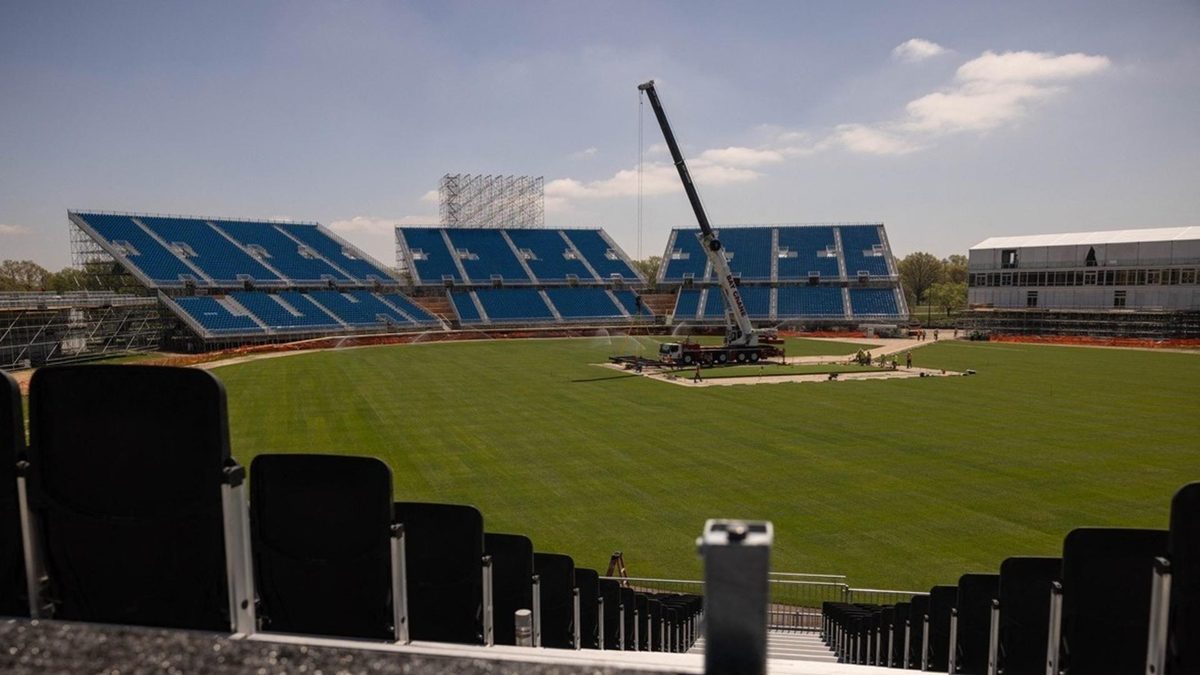
The drop-in cricket pitch is going to be one of salient features as the sport sets its eyes on global expansion.
Sri Lanka were in for a rude shock when they won the toss and opted to bat at the Nassau County Cricket Stadium in New York. The South African fast bowlers were all over them, and Keshav Maharaj – when he got a chance – offered no respite.
Sri Lanka folded for 77, their lowest total in the format. South Africa spent 98 balls and four wickets to get to the target. The 127 dot balls (out of 213, not 240) in the match were a T20 World Cup record, while the overall run rate of 4.42 was the lowest in the tournament. There were numerous individual records as well.
Predictably, the drop-in pitch at the venue some flak from the cricket community. The venue will host seven more matches in this T20 World Cup, including Pakistan vs India on Saturday.
[breakout id="0"][/breakout]
T20 World Cup schedule: Full fixtures list can be found here
What is a drop-in cricket pitch?
Exactly what the name suggests. A pitch is prepared anywhere in the world and “shipped” to the venue. They are put in place using cranes, and can be removed once they are used.
What is the point?
Drop-in pitches are essential in venues that are used for multiple sports. The Melbourne Cricket Ground is an example. The pitch is used only for the cricket – the summer game – and is stowed away for other sports. Cricket pitches require time to be prepared, and the tiny window between the cricket and AFL seasons seldom allow that.
A drop-in pitch is also a solution in countries where cricket is not the prevalent sport. The pitch at the Nassau County Cricket Stadium, for example, was prepared in Adelaide.
https://twitter.com/TheLandTekGroup/status/1796611409679094054
Who was the first to use a drop-in pitch?
Like many things in cricket, the answer to this is Kerry Packer as well. When the Australian board denied Packer the use of premier cricket venues, Packer leased VFL Park (Melbourne), Football Park (Adelaide), Moore Park Showground (Sydney), and Gloucester Park (Perth).
Since these were not cricket stadia, none of them had turf pitches. Few backed them to get pitches ready there, but Packer’s curator John Daley prepared pitches “in hothouses” outside the venues and got giant cranes to drop them inside the venues.
When was the first time it was used in Test cricket?
The Gabba had hosted the football matches for the Summer Olympics in 2000. With about two months before the Test match against the West Indies, the curators got a drop-in pitch. On a “seamy and slow” surface, the West Indies made 82 and 124 against Glenn McGrath, who had ridiculous match figures of 33-21-27-10.
Is the drop-in pitch a good thing?
It often is, because it provides a solution when there is no alternative, but there is no guarantee that the pitch will play well. They are not prepared in natural conditions, have to sustain long journeys and “adapt” to myriad conditions. Despite the additional care, there is no guarantee that the surface will hold. But then, “normal” pitches do not always live up to expectations either.
The MCG had used drop-in pitches since 1996, but in 2017, it became the first Australian surface to receive a “poor” rating. When a Sheffield Shield clash got cancelled in 2019, the authorities decided to introduce a new set of drop-in pitches.
Are we going to see more drop-in pitches?
If cricket wants to become a global sport, yes. Also, if the sport wants to become flexible enough to find pockets in the calendar of other sports and make money, also yes.
Subscribe to the Wisden Cricket YouTube channel for post-match analysis, player interviews, and much more.








